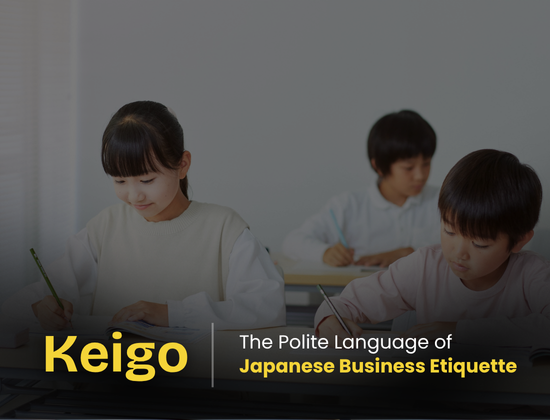
Keigo: The Polite Language of Japanese Business Etiquette
.
When diving into the world of the Japanese language, one concept that often surprises and fascinates learners is Keigo (敬語)—the art of respectful language. In Japan, where hierarchy, politeness, and group harmony play an essential role in daily interactions, Keigo is not just a linguistic tool but a cultural pillar, especially in the business environment.
Whether you're aiming to work in Japan, collaborate with Japanese clients, or simply want to appreciate the intricacies of the language, understanding Keigo is essential. In this blog, we’ll explore what Keigo is, its types, why it’s important in Japanese business culture, and how learners can start mastering it.
What is Keigo?
Keigo (敬語) refers to honorific speech in Japanese. It is used to show respect, humility, or politeness depending on the relationship between the speaker, the listener, and the people being discussed.
Unlike casual or plain Japanese, Keigo helps establish social harmony by clearly indicating your awareness of social status. In the workplace, especially in Japan's formal corporate culture, using the appropriate level of Keigo is a sign of professionalism and respect.
The Three Main Types of Keigo
To understand Keigo properly, it's important to grasp its three core forms:
-
Sonkeigo (尊敬語) – Respectful Language
Used to elevate the status of the other person. It’s typically used when talking about superiors, clients, or someone outside your company.
Example:
Instead of saying "言う (iu)" meaning "to say," you would say "おっしゃる (ossharu)" when referring to what a superior says. -
Kenjougo (謙譲語) – Humble Language
Used to humble yourself or your in-group when referring to your actions.
Example:
Instead of "言う (iu)," you’d use "申す (mousu)" or "申し上げる (moushiageru)" when referring to what you say in a formal setting. -
Teineigo (丁寧語) – Polite Language
This is the most commonly taught form in beginner Japanese classes. It includes using polite verb endings like "-ます" and "です."
Example:
"食べます (tabemasu)" instead of "食べる (taberu)" for "to eat."
Why is Keigo Crucial in Business?
In Japanese business culture, language reflects attitude. Using Keigo appropriately can:
-
Demonstrate respect for hierarchy and authority
-
Foster trust and smooth communication
-
Show your professionalism and cultural sensitivity
-
Avoid unintended offense in formal settings
When attending meetings, writing emails, or even answering the phone, using the correct Keigo can set the tone for positive business relationships.
Common Keigo Phrases in Business Settings
-
お世話になっております (Osewa ni natte orimasu) – "Thank you for your continued support."
-
よろしくお願いいたします (Yoroshiku onegai itashimasu) – A more formal version of "I look forward to working with you."
-
恐れ入りますが… (Osore irimasu ga...) – A humble way to begin a request.
These expressions are more than just words—they carry intention and humility, which are core values in Japanese culture.
How to Learn and Practice Keigo
At The Language SKOOL (TLS), we guide learners through each stage of Japanese language mastery. Here’s how you can start learning Keigo:
-
Start with Teineigo to build a solid foundation in polite speech.
-
Gradually learn Sonkeigo and Kenjougo through practical examples and role-play.
-
Use real-world scenarios—like business calls, emails, and meetings—to practice.
-
Receive feedback from instructors to fine-tune your usage and pronunciation.
Final Thoughts
Learning Keigo isn’t just about memorizing words—it’s about understanding the heart of Japanese communication. For professionals and language learners alike, mastering Keigo is a powerful step toward cultural fluency.
At The Language SKOOL, we offer personalized Japanese courses that go beyond vocabulary. We prepare you for real-world use, ensuring you're not just learning the language but living it—respectfully and effectively.
Ready to Speak the Language of Respect?
Join TLS today and take your Japanese learning journey to the next level—with expert guidance in Keigo and beyond.











